[powerkit_toc title=”Table of Contents” depth=”2″ min_count=”4″ min_characters=”1000″ btn_hide=”false” default_state=”expanded”]
Are you looking to drain your above ground pool? Perhaps it’s filled with nasty stagnant water. Maybe you’ll have to remove it completely to repair it in an emergency. In either case, you’ll have to eliminate part or all of the water from your pool. If you’ve never had to drain your pool before, making the mistake of doing it incorrectly could cause damage to the liner of your pool or, even worse, the entire thing could collapse.
This step-by-step tutorial will show you what to do to flush an above-ground pool without or with a pump. Watch the tutorial video on this page. Continue reading to find the complete pool draining tutorial.
When Should We Drain an Above Ground Pool?
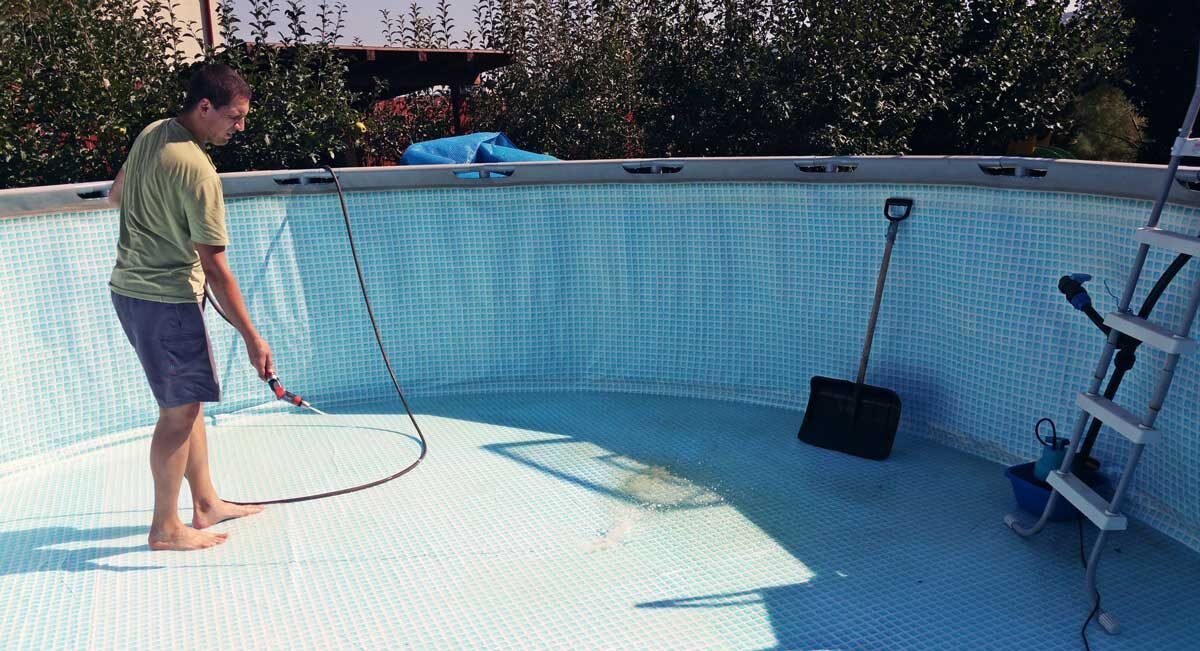
There are a handful of reasons that you’ll need to drain your pool completely. Based on the size of your pool, you’ll probably not need to drain it or even repair leaks. There are many instances that require draining out all or a large portion of the water in your pool:
Your Water’s Chemistry isn’t Rebalancing
One of the most important aspects of keeping your pool clean is keeping your pool’s water chemical. However, even if you’re careful in the maintenance of your pool, it is possible to be faced with an accumulation of total dissolved solids (TDS). These are the by-products of the chemical you use to maintain your pool’s cleanliness which slowly accumulates over time. If your TDS levels are higher than the 2,500 parts for every million (PPM), then you’ll have to remove and replace some of your pool’s water with clean water.

Another reason to upgrade the water in your Above Ground pool? The Cyanuric Acid (CYA) levels are excessively high. The only method to bring them down is to partially drain your pool and replace it with fresh water.
You Must Do Structural Repairs
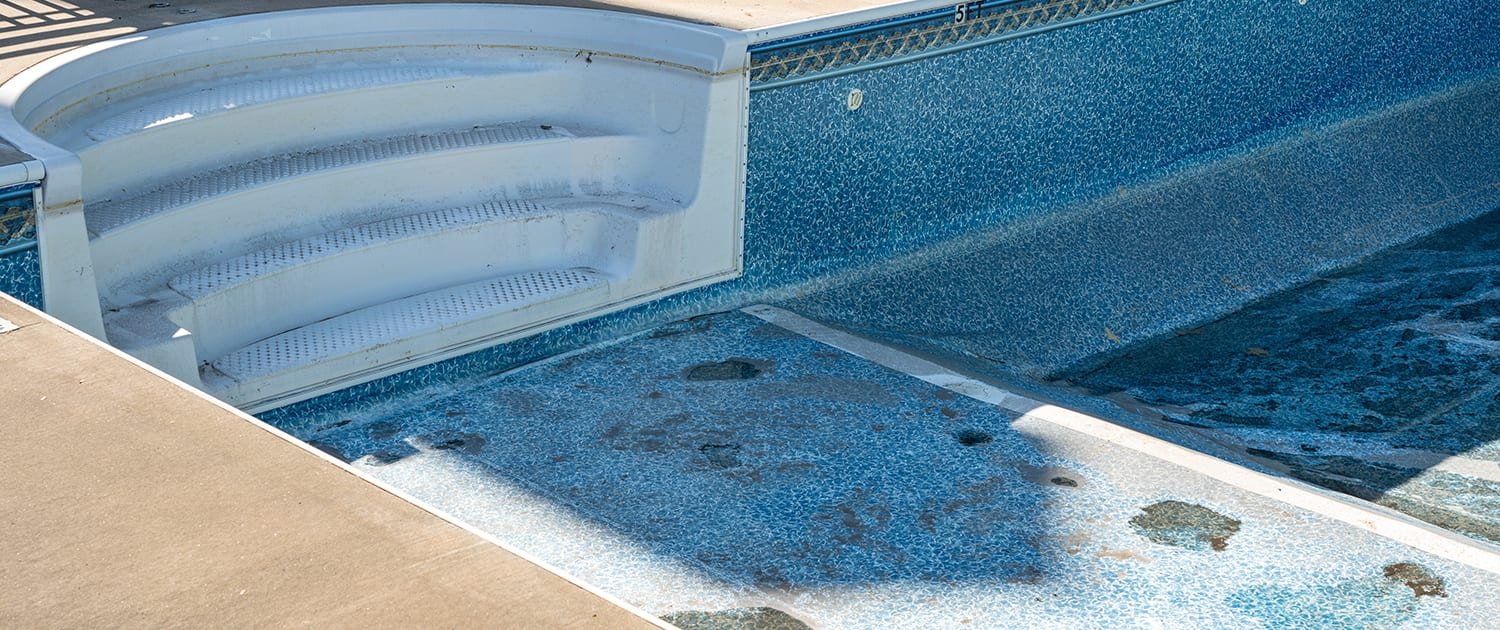
You can tackle most repairs to your Above Ground pool without draining all the water from your above-ground pool. It’s possible to patch and repair your liner when it’s submerged. However, special maintenance might require a pool that is empty. This includes tasks like replacing your entire liner or replacing the frame of your pool.
You Must Put Away Your Pool for Winter
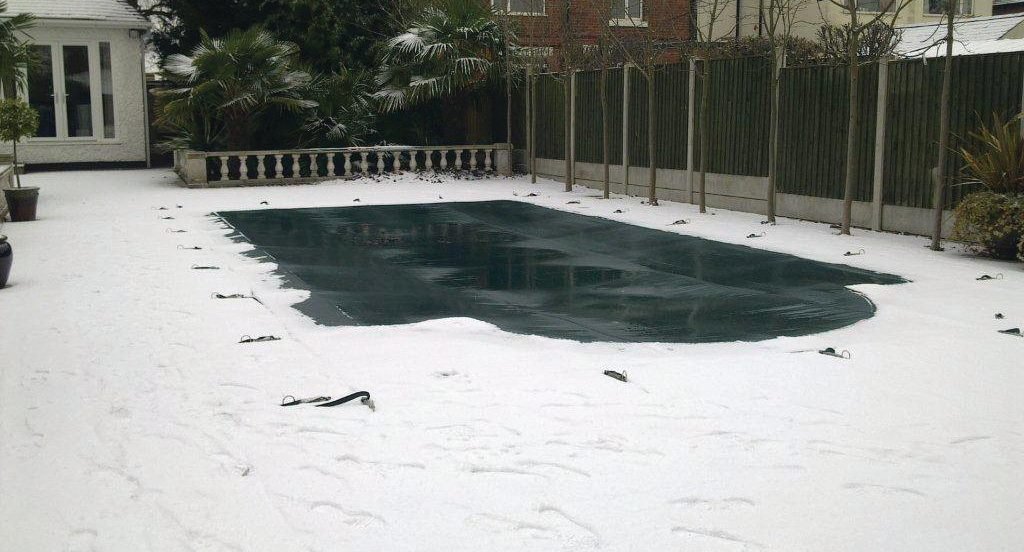
If you own an in-ground swimming pool and you live in a colder climate, it is possible to drain it and store it in winter. This not only shields your Above Ground pool from freezing temperatures but also storing your pool during the off-season is also a requirement to protect your warranty.
Suitable Weather
- You should wait for mild and warm temperatures. Based on where you reside, you could be limited as to the time you can drain your pool. Contact your local water authority to determine any restrictions. If not, you should consider waiting for a day that isn’t too hot. You should aim for temperatures of less than 85 degrees (29degC) to avoid damage to the liner of your pool.

- Switch off filters, pumps as well as heaters and automatic timers. If you have pool equipment that is automated, like pumps, you should turn them off prior to draining. If the water level drops below the skimmer’s line and the pump starts to run, the pump can get overheated.
- It is recommended to remain close to your pool during times when it is draining.
- Don’t leave your pool unattended as it drains or fills. You can anticipate it to take between 8 and 14 hours of draining time, depending on the dimensions of your pool and how much you’ll use a pump or water hose. Keep in mind that you’ll spend approximately similar time to fill it once more (check out our Fill Time Calculator to figure out how long it’ll require to drain or fill up your pool).
3 Methods to Drain an Above Ground Pool
There are three options to drain your above ground pool. These include siphoning water with an outdoor hose or using the submersible pump, or using your drainage adapter for your pool.
If you just need to drain your pool partially in order to change your water’s chemistry and the water is drained, siphoning it out by using a garden hose can be an option that is simple. However, if you’re looking to completely drain your pool, you’ll need to make use of the sump pump to accelerate the process.
If you’re draining a swimming pool to store it for the winter seasons in colder climates, it is possible to make use of the drain adapter built-in (if there’s an adapter).
Garden Hose Siphon Method
If you’re only draining a small portion of your pool or do not need pumps, you could utilize a garden hose in order to drain the pool’s water. This will take longer as compared to using pumps; however, this simple, DIY approach means that you won’t require the purchase or rental of any equipment. The easiest way to make a siphon is to submerge the whole garden hose underwater and then remove just one side of the hose from the pool.
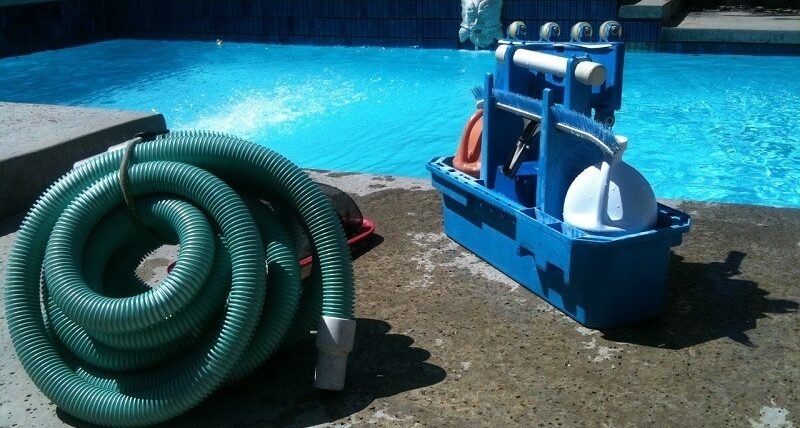
- Submerge the entire length of the hose into the swimming pool. Place both ends of the hose beneath the surface until air bubbles have stopped. This means that the water hose has now been filled with water.
- Your hand should be placed on one edge of the water pipe. While covering the other end then, pull the end of the hose from the water.
- The end that you’re holding onto the floor at a lower elevation than the waterline of the pool. If you take your hand away, water will begin to flow out. The hose at the exterior of the pool must be less than the water level within the pool. Make sure that the end of the hose that is in the pool is not submerged.
When your water’s level is too low for this method, or there isn’t the desired siphon, you can accelerate the process by connecting an outdoor hose to your home’s spigot (or an outdoor tap).
How to Create an Garden Hose Siphon Using a Spigot
- Connect the one end of your garden hose to the spigot and put the other end into the pool. This is the same as if you wanted to fill the pool. Be sure that the portion of your garden hose inside the pool is securely secured or weighed down to ensure it doesn’t break and fall out.
- Switch off the water. Water is supposed to be flowing through the hose and is filling up your pool.
- When the hose is filled with water, remove it out of the spigot. Then, place the other part of the pipe onto the ground, and then shut off your spigot. The siphon should be created at this point. Water is expected to drain from the pool via the hose. Be sure to ensure that the ends of the hose are lower than the water level in the pool.
Be aware that the hose siphon will slow down and become slower as the level of water decreases. If you have an above-ground pool, it could take a few days to finish this draining. There will be one or two inches of water at the bottom of the liner. The remaining water is easily removed using an industrial vacuum.
How to Drain an Above Ground Pool With a Sump Pump
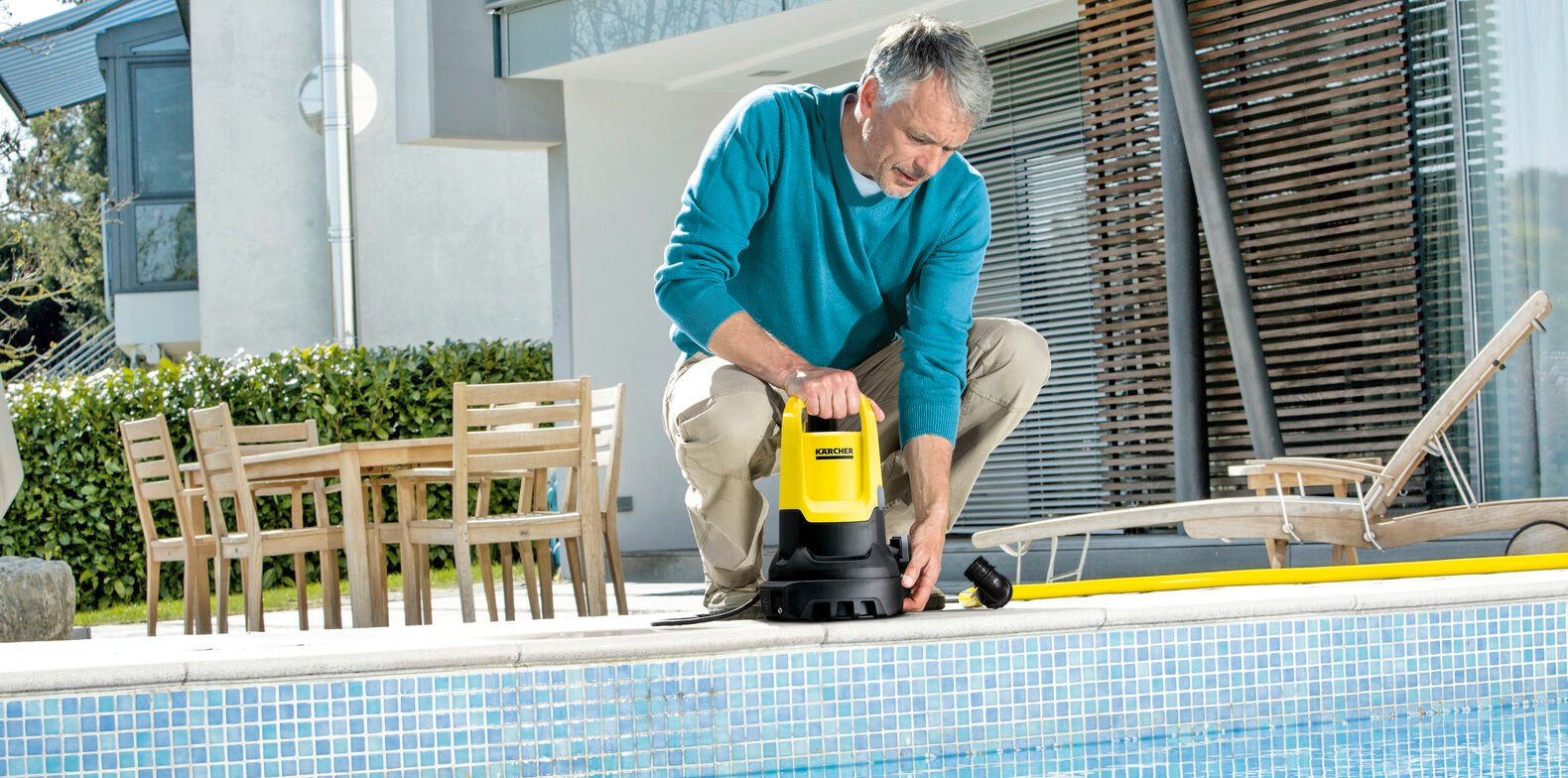
Utilizing a submersible electric pump, a.k.a. a sump pump, to drain your Above Ground pool is more efficient than using the garden hose. If you’re looking for the pool to be drained each winter, investing in the sump pump is an investment worth it. You can also lease one from your local hardware retailer if it’s just a once-in-a-lifetime task and you’d like to reduce costs.
Read Also: Home Improvement
How to Drain an Above Ground Pool With a Drain Adapter
If you own an Intex, Coleman, or any other above ground pool that is temporary, it could come with an adapter to drain. This permits you to drain the Above Ground pool more quickly if you need to remove it at the conclusion of the course.
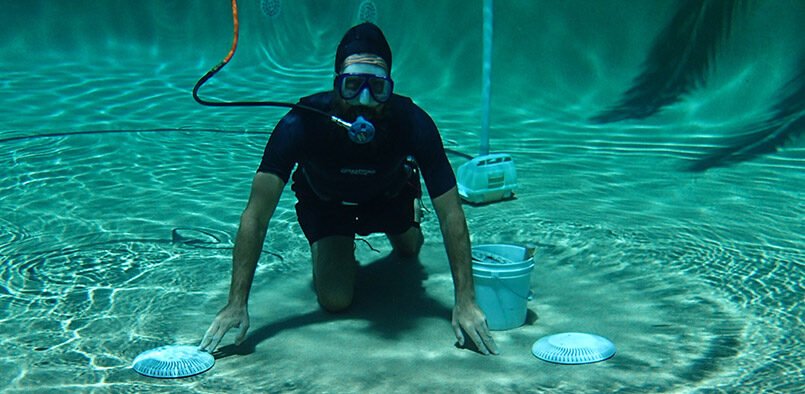
- The draining plug should be connected to the garden hose prior to closing the valve. Without a hose, the water will run through the Above Ground pool and under it, which softens the ground on which the pool sits. It is possible that you will require some adapters to attach your garden hose to your pool.
- Put the opposite part of the garden water far from the Above Ground Pool Be sure that it’s not flowing into the neighbour’s yard.
- Be aware of how much water is flowing. Relying on the number of gallons of water you have in your Above Ground pool, it is possible to rotate your hose every now and then. Be aware that your water shouldn’t flow into an uncontrolled storm drain.
How to Refill Your Above Ground Pool
If you’re doing repairs or adding new water, don’t count on leaving your Above Ground pool unoccupied and dry too long. The sun’s rays and the weather can cause damage to the liner of a pool that is empty. When you’ve finished the repairs, you should begin refilling your pool. Think about using multiple garden hoses to speed the process.
When the water is at the halfway mark of your skimmer, you are able to turn on the pump and filter. After that, you can rebalance and test your water. If you need assistance finding the appropriate chemical levels in your water, take a look at our tutorial on Basic Pool Chemistry 101.
Frequently Asked Questions About How to Drain an Above Ground Pool
Need help with the draining of your pool? Find the answers to your most frequently asked queries here.
What is the Time it Will Need to Empty an Above-Ground Pool?
It could take up to 14 hours in order to completely drain the pool, depending on how big it is as well as whether you’re using an outdoor hose or a sump pump. Make sure you don’t leave your sump pump in the unsupervised area while you drain.
What’s the Quickest Method of Draining an Above-Ground Pool?
Submersible pumps are the most efficient method of draining your pool. It functions as an air vacuum that removes water swiftly. However, you’ll need to watch it as it runs. The garden siphon is a different alternative to drain water, but it’ll take a lot longer.



